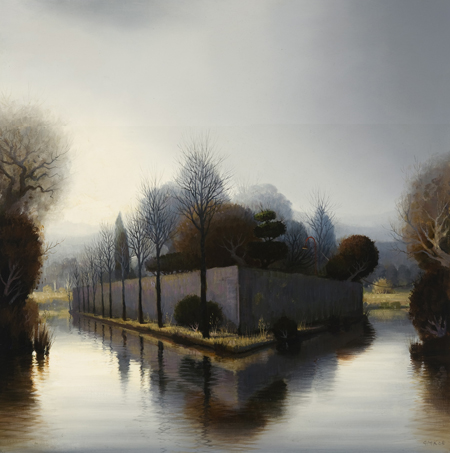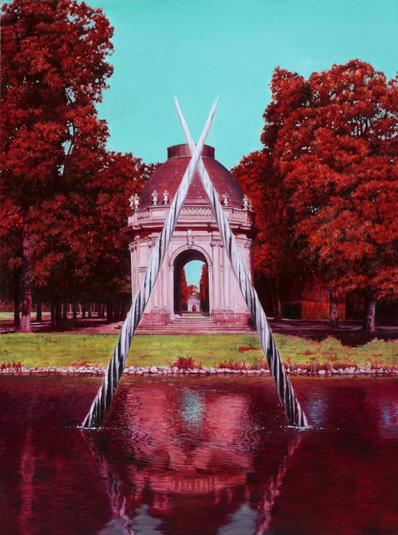A new exhibition by young artist Todd McMillan has just opened at GrantPirrie, a contemporary art gallery in Redfern. The show is notable for a very special reason – its a celebration of failure. Earlier this year McMillan attempted to swim the English Channel but he didn’t quite make it. He swam until he got tired. He then abandoned the attempt for the safety of a boat… still in sight of the shore. This new series of video works carries on from other recent McMillan videos that have seen the artist endlessly and pointlessly hitting golf balls down a driving range somewhere in Germany, or in another where he stumbles around on crutches with a plaster cast on one leg. Failure is his theme.

Todd McMillan, Swim 1 (from the series ague), 2009.
C type photograph, 131.67 x 87.78cm
Photograph by Michael Moran.
You’d be forgiven for wondering why an artist would take on failure and indeed, why it would be worth watching. Isn’t art supposed to be about success? The popular measure of artistic merit is a demonstration of the artist’s ability to use craft skills – to paint a portrait that looks like the subject, to take a lovely photograph, to convincingly chisel a head in stone – these are the things that make people say, wow, I wish I could do that. Failing to swim the English Channel is something that everyone can do. Or fail to do, if you know what I mean. No special skills are required not to be able to do something. We generally like to enjoy looking at things being done by people who have the ability to do unusual things in the same way we appreciate a monkey using the telephone. That is a very special skill, and it’s noteworthy. Oh look – the monkey is wearing pants!
McMillan is notable as a successful failure and his work is being taught in high schools as part of the Kaldor Projects video art package. But he’s just one of a whole generation of younger artists who strive to fail. The Melbourne-based performance video artist Anastasia Klose celebrates the fact that she has failed in romance, has failed to get a decent job or to make a decent living from her art. Another artist of note is the young Sydney painter Tom Polo, who combines frank admissions of failure with the ambition to win. There are many other examples of failure in contemporary art and it must be said that these examples are of intentional failure, an ironic kind of activity that isn’t truly a mistake, or a disaster, since the artists do manage to finish their works, exhibit them and, in some cases, sell them to people who appreciate failure when they see it.
The roots of this trend towards disgrace are found in the rich soil of Australia’s artistic legacy. Older artists such as the painter Adam Cullen or the performance artist Tony Schwensen have tackled the cold toed comedy of Samuel Beckett who, after all, wrote an entire play about a lead character who fails to show up. Blame for the popularity of the failure theme should also be placed on UK artist David Shrigley who has parlayed his unwillingness to draw “properly” into multinational mega art stardom.
There may be another reason why being crap is so popular now – and that’s the ugly tendency in Australian culture to revel in triumphalism. One need only think of the absurd and unreasonable expectation of success at every level of sporting competition to realise just how deep the need to win runs in the Australian psyche.
The much touted ANZAC spirit – based on an event that can be best characterised as a noble failure – is an exception that it is also sadly out of date. It’s not about how you play the game these days, it’s about winning. I like to think that Australia’s attitude to winning and losing is best summed up in the stunning victory of ice skater Steven Bradbury at the 2002 Winter Olympics. Bradbury, who’d managed to get into the final after a series of improbable strokes of luck, won a gold medal from last position when all the other competitors literally fell over. Bradbury is now a folk hero.
Todd McMillan’s inability to swim the English Channel is far more interesting that had he actually done it. Being a winner, a success, or a top sportsperson or artist, is incredibly overrated. To happily fail is an admission of the essential frailty of the human condition. We all should strive to fail again, and to fail better.
Published in a slightly different form here






